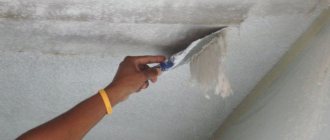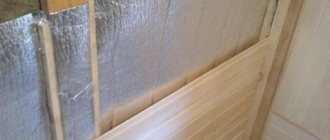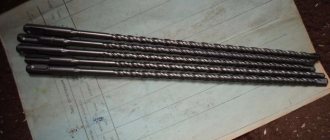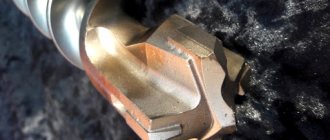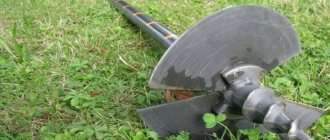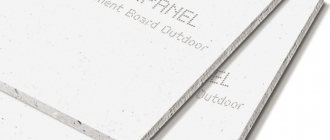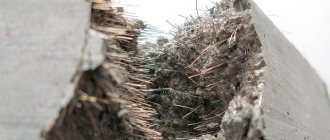Every tool needs timely maintenance, and a rotary hammer requires this first and foremost. After all, the operation of this tool is accompanied by a huge number of reciprocating rotations and movements, and the volume of dust released from the work object is highly concentrated. Under these operating conditions, careful care of the device and timely replacement of the lubricant in the hammer drill gearbox are required.
Most users are confident that if lubricant is present, they can work with it for an indefinite amount of time. This opinion usually exists among users due to a poor level of knowledge of the laws of physics, so we will tell you in more detail about the mechanism of operation of the lubricant.
What parts need to be lubricated in a hammer drill?
Wear of metal parts in various mechanisms mainly occurs due to the fact that they intensively rub against each other. At the same time, the size of the nodes decreases until they completely lose their functionality. To reduce the coefficient of friction and extend the life of the mechanism, various lubricants are used.
For this purpose, oils of sufficient viscosity are suitable, which do not drain from the parts, but stick well to it. Thereby providing reliable protection against overheating, as well as dust and dirt getting into the important unit. And viscosity in this case is the most important factor when choosing a lubricant.
The main parts of the rotary hammer that need to be protected:
- Gearbox.
- Cartridge.
- Drill tip.
The gearbox is the most important unit, which is responsible for changing the speed of the working nozzle. To protect it from external influences, it is covered with a casing. But the gears of the unit are subject to significant loads during operation. Due to this, the friction of parts against each other increases, and wear increases.
Hammer gearbox Source ytimg.com
When assembling a tool at a factory, lubricant must be applied to its working unit. But you should know that the quality of the latter directly depends on the brand. And cheap models are often protected with dubious materials. Therefore, in such cases, experts recommend completely and dryly removing the factory lubricant and recoating the parts with an already proven product.
Lubricating a rotary hammer involves working not only with the transmission mechanism. The cartridge, which arrives dry from the factory, also requires reliable protection. It is necessary to coat with oil the inner part that comes into contact with the drill shank.
It is in this place that the tool experiences the strongest friction during operation. And for the same reason, the nozzle shank itself requires lubrication. But many masters apply oil to just one thing. More often one drill is lubricated. And when installing it in the chuck, excess lubricant gets onto the jaws of the clamp, reliably protecting the surface.
There is one more unit in the hammer drill that could use some lubrication. But many people either don’t know about it or simply forget. We are talking about a manifold with plain bearings. The load on them is also considerable, so they need to be lubricated regularly.
Sliding bearing in a Makita hammer drill Source prom.st
The main goals of adding lubricant to the design of a hammer drill:
- Reduce friction of all moving parts of the mechanism.
- Reduce surface heating caused by friction.
- Protect the mechanism from moisture and dust.
- Capture metal dust that forms when parts wear. Don't let her participate in the friction.
In the latter case, the smallest chips act as abrasives, which begin to deform the surface of the parts. And if you do not get rid of this dust at regular intervals, tool wear increases significantly. And lubricant for the rotary hammer gearbox can extend its service life.
Assembling the electrical part of a Bosch 2-26 rotary hammer
The assembly of power tools, including the Bosch 2-26 rotary hammer, should be performed in a previously prepared area. Prepare your work area by covering the table with clean paper or a napkin. Prepare the tools necessary to complete the work. The tools you will need are: screwdrivers, pliers, tester, 100 g hammer, soft metal spacers. Spacers are useful when installing bearings on the rotor and intermediate shaft of a Bosch hammer drill, for their attachment.
Electrical diagram of the Bosch 2-26 rotary hammer
Assembling the rotor of a Bosch 2-26 hammer drill
On the repaired or new rotor, pos. 803, install the fan, pos. 5, and bearings, pos. 13, 14. To lubricate the rotor bearings, use Bosch grease 1615430020.
Installing the stator into the housing
Installation of the stator pos. 2 into the housing pos. 801 begins by threading the connecting wires of the stator coils through the housing. The stator is secured in the housing with two screws, pos. 80. To protect the stator from dust or dirt, a plastic casing, pos. 45, is installed on it in the housing.
Installation of hammer drill control units
In the case pos. 801, sequentially install the Bosch hammer drill power button, contacts pos. 19 and the reverse switch board pos. 16. make sure that all supply wires fall into special grooves in the hammer drill handle.
Lubrication frequency
It must be recalled that oil on parts only reduces the coefficient of friction, and does not completely eliminate it. The metal elements of the mechanism continue to touch each other. At the same time, chips and fine steel dust are separated.
Gearbox lubrication Source smazki.guru
These wear products settle on the lubricant and gradually accumulate in large quantities. Therefore, a common mistake of inexperienced craftsmen is that they add new lubricant only when the old one runs out. And seeing a sufficient amount of oil on the surface of the gearbox, beginners are in no hurry to change it.
Meanwhile, a large amount of small metal shavings only aggravates the situation. Due to foreign debris, friction between parts increases. And this leads to their rapid wear. Therefore, if a hammer drill has been used regularly, but there is still enough grease on its gearbox, most likely it has already become unusable. And it urgently needs to be replaced.
The frequency of lubrication of the impact tool is a purely individual matter. And it depends on the frequency of operation of the hammer drill. If the device is in use almost every day, then a complete oil change should be done once a quarter. When the device is used no more than once a week, then preventive actions can be carried out no more than once a year.
Lubrication in the gearbox Source stroy-podskazka.ru
See also: Catalog of construction companies that have their own production of materials and components for the construction of houses
Do-it-yourself Diold PRE5 repair
When a tool breaks, the owner first tries to find the cause of the breakdown. We have to remember the operating conditions, and it turns out that many violate the standards for using the tool. For example, they use a Diold hammer drill with excessive force, during network failures and other difficult conditions, and this mode leads to failure of the tool. Damage is divided into the following:
- Electrical. The device does not work: it sparks inside the case, the speed controller does not work, and the machine knocks out during operation.
- Mechanical. The chiselling function does not work: there is a crackling or grinding sound, modes do not switch, lubricating fluids leak out of the device.
The first step is proper disassembly of the device. The Diold PRE5 model has special features in its device. What all rotary hammers have in common is that the body is made of two parts. These are the front and rear halves on the chuck side. The housing is tightened with screws. Repair of the Diold PRE5 tool has characteristic breakdowns, like the PRE7 model. These include the armature, gears, brushes, bearings, switches, starters, and network cable. PRE5 belongs to the light class, so it can be repaired better.
How to lubricate the gearbox
Many leading manufacturers of electromechanical tools complete their products with special gear oil. This is due to caring about the buyer and maintaining its image. After all, a tool in high-quality lubricant will work much longer and without any interruptions.
But if there are no recommendations from the manufacturer, then you need to figure out on your own what kind of oil is needed for the tool. For example, lubricant for a Makita hammer drill can be successfully used for other models. The main thing is that the mechanisms of the devices are similar to each other. But the working conditions are practically the same.
Either a liquid product or its more consistent analogue can be applied to the working components of the hammer drill. But in the first case, the instrument must have a sealed housing. It must completely isolate the gearbox since liquid oil must be kept inside. And for this they use sealing seals on the shafts.
Gear oil Source ozone.ru
Liquid oil for the hammer drill is supplied to the working unit through a hole that has a special sealed plug. And such a system is considered very effective. After all, gears, like other moving parts, are evenly coated with an antifriction compound.
In addition, the latter is in constant motion when the tool is working. It turns out that the oil constantly washes away fine metal dust from the surface, preventing it from participating in friction. And it additionally cools the gearbox.
But long-term operation of the tool without periodic shutdowns can significantly increase the temperature in a hermetically sealed space. This creates dangerous pressure under the housing. This factor is a serious disadvantage for such structures.
Therefore, models for which greases are used are more popular. The density of the latter in a cold state allows it to be securely held on working units. And to prevent splashing during gear movement, a good seal on the tool body is sufficient.
Universal product for lubrication Source skidka-volgograd.ru
Basic requirements for consistency compositions:
- The adhesion of the product must ensure the presence of an oil film under any load.
- Since when the unit cools down, the humidity inside it rises sharply, the water resistance of the lubricant must be quite high.
- When in contact with water, the composition must maintain its density and not form an emulsion.
- The basic properties must remain unchanged, both during liquefaction during operation and when the original viscosity is restored.
- The drop point of the composition must be high enough so that the lubricant of the hammer drill gearbox is not thrown off the surface of the teeth during centrifugal movement.
- The composition must have good binding properties in order to neutralize dust entering under the housing from the outside.
- Anti-corrosion properties should be the same for any metal used in the manufacture of a hammer drill.
Most of the requirements also apply to liquid formulations. The latter does not need to have good adhesion. After all, in a sealed crankcase, all surfaces are constantly washed.
Impact mechanism
This part of the tool provides the main task of the hammer drill - to chisel. The type of operation can be mechanical or pneumatic.
There are two design options for a pneumatic mechanism : using a rolling bearing or a crank type. The first option is used for a household type of tool, and the second - for a professional one.
A device using a rolling bearing, or otherwise a “drunk bearing,” consists of a group of elements: a piston, a firing pin, a ram and the bearing itself.
The rotation of the engine during operation is associated with the inner sleeve of the “drunk bearing”. The outer sleeve is connected to the piston and performs a rolling motion. The distance between the piston and the ram is filled with air. It, subject to changes in pressure, acts on the ram, which repeats the movements behind the piston. As a result, a blow is struck to the striker, which, in turn, transfers the force of the blow directly to the drill. This action actually means the conversion of electrical energy into mechanical energy.
Leading lubricant manufacturers
Before wondering how to lubricate a hammer drill, you need to choose the right product. Having understood the crankcase design and choosing either liquid or grease lubrication, you need to choose the manufacturer. And here you can go one of two ways.
The easiest thing to follow is a brand. Bosch, Makita, Lubcon, AEG are widely popular. In this case, you need to use lubricant from the same manufacturer that manufactured the tool. This ensures that all of the above requirements will be met.
In addition, such lubricants often have accompanying documents, which even indicate specific models that are best compatible with the product. Sometimes there is even a list of other brands whose equipment can use this product. But you still need to be extremely careful in your choice.
Lubricant products from Bosch Source allegroimg.com
You can also use universal lubricants from leading manufacturers. Companies such as Castrol, Xado, Ravenol and Shell produce a line of oils that are equally suitable for any equipment. And the only condition for proper use is that there is an indication on the product packaging that this is indeed a lubricant for the gearbox of a power tool.
The owner can only choose the consistency. And the technical documentation included with the hammer drill will help you do this correctly. There is always complete information there, including recommendations for lubrication of working units.
Features of oil selection
Before lubricating Bosch rotary hammers, you should select the appropriate oil. When purchasing it, you need to pay attention to the viscosity . High-quality compounds are expensive, but you shouldn't skimp. Such an expensive tool as a rotary hammer requires constant care. What types of lubricant and how much can be used are indicated in the instructions. If such information is not available, specialists from a retail outlet or service center will help you select the best composition. There are universal compounds on sale for processing various models of rotary hammers.
Many people prefer to use graphite lubricants , which have:
- high quality;
- good viscosity;
- affordable price.
If there is no lubricant, you can use lithol or grease . But they cause slight braking of the rotating parts and contribute to increased heating of the tool during operation. It is advisable to buy a special composition in the near future, remove the lithol and apply a new composition.
Before lubricating a rotary hammer drill, you need to make sure that the oil you use is suitable for it. The compounds used for gearboxes are not suitable for lubrication. For the latter, use more liquid products ; they must fill the free cavities and completely cover the parts that are in contact with each other. If there are plastic elements in the gearbox, use silicone grease. It is suitable for processing cartridges.
The transmission mechanism can be lubricated with plastic compounds . But not all tools will work smoothly when using products of this consistency. Thicker mixtures are suitable to reduce tail tip wear. The packaging indicates their purpose for processing drills. If you don’t have them, you can take graphite ones, but they dissipate heat worse.
Manufacturers of electric tools produce their own branded lubricants . They are also produced by enterprises that specialize in the production of lubricant mixtures.
The most popular products include:
- Bosch - for tail nozzles and gearboxes.
- Makita – for processing drills.
- Interskol - for the Boers.
- Nanotek – for shanks.
- Turmogrease - universal formulations.
- Lubcon Thermoplex – for gearboxes.
- Kress – for lubrication of drills.
- PRORAB – for processing the seats of tail nozzles.
Lubricant for hammer drills from the Makita brand
How to lubricate the drill
Lubricant for hammer drills is somewhat different from gear lubrication. After all, the working conditions in the tool chuck are strikingly different. Therefore, it is not surprising that the products have a different composition.
Operating conditions for the drill in the chuck:
- All loads have a variable vector. Moreover, they go both in the transverse and longitudinal directions.
- There is a technological play, and it allows the tip to come off the surface. And this is fraught with the risk of rupture of the oil film.
- Most movements are chaotic and multidirectional. And at extreme points, the shock load can completely displace the lubricant.
Shank of a rotary hammer drill Source academic.ru
Troubleshooting
As noted, some problems can be identified immediately. The main thing is to understand in which part of the hammer drill the problem has arisen.
If you understand that the problem is in the electrical part, then be careful. Make sure that the hammer drill is de-energized, otherwise repairing such a tool is dangerous not only for it, but also for your health.
When the hammer refuses to turn on, the failure is electrical and you should check to see if the wires are broken. In this case, first determine where exactly the wire is broken, then replace it or shorten it at the break point.
If you load the hammer too much, the damping mechanism may burn out. Then you will have to replace all burnt parts.
If something sparkles inside, then most likely the problem is in the brushes. They either do not fit tightly to the anchor, or moisture got there and they began to oxidize. Then the best solution would be to replace them.
If water has already gotten onto the anchor, then you will have to carefully dry everything, but so as not to also spoil the winding. To do this, use a cotton swab and alcohol.
An additional sign of problems with brushes is the appearance of smoke. This means that these devices have worn out and the wires are in contact with the armature. In this case, the brushes should be replaced with new ones.
In addition, smoke may mean that there is a malfunction in the motor - it seizes, heats up, and this causes smoke. Faults in the mechanical part are in most cases determined by ear. Noise and grinding are the main signs of a problem in this part of the hammer drill. Fixing problems here is much easier and safer for your health.
The most common sign that a problem has occurred is a decrease in productivity. Often, it is because of a broken switch that the hammer drill stops hammering. It is worth replacing the power button for further work.
Another possible reason for deterioration in the level of performance may be contamination of the device. To fix the problem, you need to clean and lubricate the device.
In addition, problems often arise with the impact mechanism itself. But to determine the exact cause, it is necessary to examine the entire part, since the problem could be either in the drill or in the small iron ball inside the chuck. Therefore, to repair the impact mechanism, you should look for the cause in the entire mechanical part of the device.
Briefly about the main thing
To increase the service life of power tools, it is necessary to use only high-quality lubricants. In particular, for uninterrupted operation of the rotary hammer, it is better to opt for specialized compounds that the manufacturer supplies with its products. This will guarantee the correct selection of the necessary lubricant components for this particular model.
You can also use products from leading manufacturers of oils and lubricants. Their universal materials are of high quality and are not much inferior to specialized products. The only condition in this case is the need to change oils more often than usual.
Ratings 0
DIY repair
Repairing a rotary hammer with your own hands can only be partially done. But, for example, it is still better to perform such a unit as an electric motor in a special workshop.
It is best to carry out repairs in the warranty workshop of the company from which it was purchased.
To lubricate the hammer drill components, you must use only those materials recommended by the manufacturer.
Basic rules governing the operation and care of a rotary hammer
Perhaps any of us understands that the key to the longevity of a rotary hammer is proper care of it. Moreover, you need to be especially careful about lubrication of its components. This is especially relevant when working with concrete. Because it is usually accompanied by the formation of a huge amount of dust.
When finished, wipe the tool with a soft cloth. If necessary, you can also treat with a soap solution. The ventilation openings on the housing must also be kept clean.
Barrel perforator Diold PRE-4 (Diold PR-4/850)
- Manufacturer: Diold
- Article: Diold PRE-4
- In stock: In stock
Model features
- Description
- Reviews (3)
Manual electric hammer drill Diold PRE-4 (PR-4/850)
850 Watt / 3 J / 700 rpm min / 4000 beats min / 5.3 - 8.2 kg Release safety clutch Easy access to carbon brushes Durable plastic case with reliable fasteners Drill chuck and SDS+ adapter included Universal accessories (3 drills, picks, chisel, lubricant, boot, brushes) Reliable barrel hammer drill designed for continuous work under load Art. PR-4/850 - with vibration-damping handle Art. PRE 4 - safety glasses and gloves included
Purpose:
The manual electric hammer drill PRE-4 is designed for operation in shock-rotational and impact modes. Impact-rotational mode is designed to create holes in concrete, brick and other building materials. The impact mode is intended for chiseling concrete, brick and other similar materials.
Main parameters:
Rated power consumption - 850 Watt; Supply voltage - 220 V ± 10% Volt; Mains frequency - 50 ± 5% Hertz; The maximum diameter of drilling holes is 30 mm; Working tool clamping system - SDS - plus Nominal speed of the working spindle at idle speed - 700 rpm; The nominal number of blows at idle is 4000 beats/min; Impact energy - 3.5 Joules; Electric motor type - single-phase, commutator with double insulation Operating mode according to GOST 183-74 - S 1 (continuous); Hammer class according to GOST 12.2.013.0-91 – II; Weight without additional handle and power cord - 5.3 kg; Overall dimensions (without additional handle, power cord, chuck) - 390 x 92 x 250 mm; The service life declared by the manufacturer is at least five years.
Case dimensions: 11x38x43 cm. Total weight of the tool in the case with accessories: 8.2 kg.
Contents of delivery:
Manual electric hammer drill PRE-4; Additional handle; Depth gauge; Transition cartridge; Drills 6, 8, 10 mm; The chisel is flat; The chisel is pointed; Dust ring; Key; Tube with lubricant; Manual; Case - (See photo).
Recommendations for using the product:
The hammer drill is intended for operation in temperate climate areas, version UHL, placement category 3.1 according to GOST 15150-69. The hammer drill is designed to operate under the following operating conditions: the environment surrounding the hammer drill is non-explosive; no drops or splashes, ambient temperature from minus 15 ° C to plus 35 ° C; the upper value of relative ambient humidity is 80% at 25 ° C; It is recommended to store the hammer drill in a dry, heated and ventilated room.
Characteristic advantages of the model:
UNIVERSAL PERFORATOR-CHAMPER – “PROFI” WILL PERFORM ANY HARD JOB VIBRATION-DAMPING HANDLE RICH EQUIPMENT IN THE CASE
Manual electric hammer drill Diold PRE-7 (PR-7/1000)
1000 Watt / 3.5 J. / 4000 beats. min / 5.9-8.6 kg. BARREL-pro for extreme loads Case with glasses, gloves and accessories Ratchet safety clutch Easy access to brushes Drill chuck and SDS+ adapter included Durable plastic case with metal fasteners Set of accessories (3 drills, picks, chisel, lubricant, boot, brushes)
Purpose:
The manual electric hammer drill PRE-7 is designed for operation in shock-rotational and impact modes. Impact-rotational mode is designed to create holes in concrete, brick and other building materials. The impact mode is intended for chiseling concrete, brick and other similar materials.
Main parameters:
Rated power consumption - 1000 Watt; Supply voltage - 220 V ± 10% Volt; Mains frequency - 50 ± 5% Hertz; The maximum diameter of drilling holes is 30 mm; Working tool clamping system - SDS - plus Nominal speed of the working spindle at idle speed - 700 rpm; The nominal number of blows at idle is 4000 beats/min; Impact energy - 3.5 Joules; Electric motor type - single-phase, commutator with double insulation Operating mode according to GOST 183-74 - S 1 (continuous); Hammer class according to GOST 12.2.013.0-91 – II; Tool weight: 5.9 kg; Overall dimensions (without additional handle, power cord, chuck) - 390 x 92 x 250 mm; The service life declared by the manufacturer is at least five years. Case dimensions: 11x38x43 cm. Total weight of the tool in the case with accessories: 8.6 kg.
Contents of delivery:
Manual electric hammer drill PRE-7; Additional handle; Depth gauge; Transition cartridge; Drills 6, 8, 10, 12 mm; The chisel is flat; The chisel is pointed; Dust ring; Strobnik; Key; Tube with lubricant; Manual; Case - (See photo).
Recommendations for using the product:
The hammer drill is intended for operation in temperate climate areas, version UHL, placement category 3.1 according to GOST 15150-69. The hammer drill is designed to operate under the following operating conditions: the environment surrounding the hammer drill is non-explosive; no drops or splashes, ambient temperature from minus 15 ° C to plus 35 ° C; the upper value of relative ambient humidity is 80% at 25 ° C; It is recommended to store the hammer drill in a dry, heated and ventilated room.

